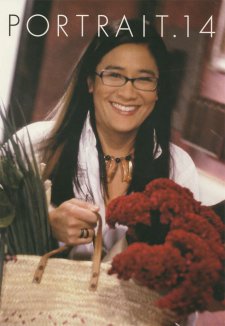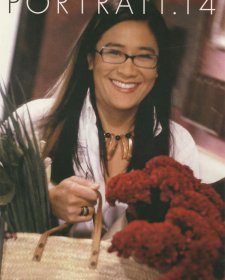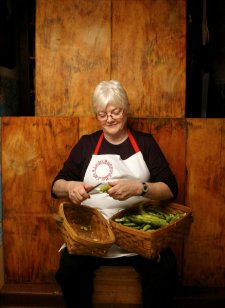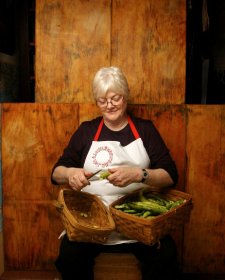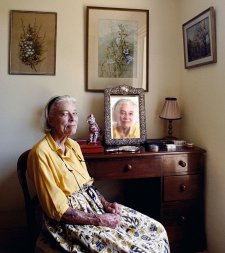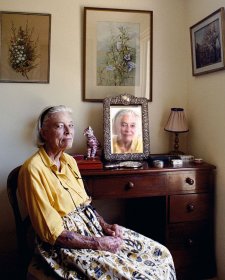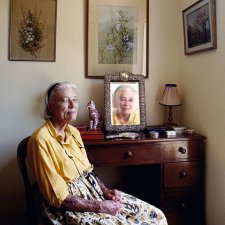On October 21 and 22 the directors of the world's national portrait galleries met in Edinburgh for two days of sharing ideas and information. Although we have long enjoyed informal and unilateral links, the Edinburgh meeting was the first occasion on which representatives of all the world's national portrait galleries had met in one place.
It is a delightfully eclectic group. The histories and institutional frameworks of each of the portrait collections are very different. Yet there are two common ideas that link them - the belief that portraits illuminate history and that a continuous display of portraits, embracing the historical and contemporary, helps us to understand the way in which individuals have shaped and continue to shape our national identities.
Hosted by James Holloway, who is responsible for the Scottish National Portrait Gallery, the meeting was attended by those responsible for the national portrait galleries in England, Ireland, the United States, Canada, Denmark, Sweden, New Zealand and Australia.
En route to Edinburgh I took the opportunity to visit the Swedish and Danish portrait collections. In some respects there could be no greater contrast than between these two collections and our own very new portrait gallery in Canberra!
Sweden's national portrait collection is housed in Grippsholm Castle, a monolithic building set on water's edge next to the village of Mariefred, about an hour's journey from Stockholm. At Grippsholm the visitor can tour sixty rooms which form a sequence from the Renaissance to the present. On this journey the visitor encounters some impressive collections within the wider sequence. Perhaps the most impressive group are a sequence of large paintings of eighteenth-century rulers including a full-length portrait by Alexander Roslin, Sweden's most celebrated court portraitist (Roslin will be the subject of a major exhibition in Stockholm in 2007).
The Swedish national portrait gallery commissions one portrait each year to add to the contemporary end of the collection. The most recent of these commissions is a portrait by the great American photographer Irving Penn of the Swedish veteran photographer Lennart Nilsson. It hangs in a room in which are some of the more well-known Swedish men and women of the modern era are represented - Dag Hammarskjold, Astrid Lindgren and Olof Palme.
As in Sweden, Denmark's national portrait gallery is housed in a royal castle. Fredenksborg Castle is a half-hour's train ride from Copenhagen and presents a romantic view from the town-square across the lake from Hillered. While the exterior prepares the visitor for an authentically seventeenth-century century experience, all is not as it seems. In 1859 the interior of Frederiksborg was severely damaged by fire. Most of the interiors and two thirds of the portraits were destroyed. Following the fire, reconstruction of the castle interiors was funded and overseen by the brewer of Carlsberg fame J.C. Jacobsen. His vision for Frederiksborg was to re-build a national portrait collection and he funded a series of newly commissioned history paintings of key events on Danish history.
Jacobsen's legacy has been a portrait collection that continues to the present. On the top floor of the castle a series of rooms displays the contemporary collection. I was interested to see Ole Haupt's portrait photograph of Jam Utzon (the same image we have in our collection) taking its place among portraits of prominent living Danes. The collection does not yet include a portrait of the crown princess but picture postcards of the royal couple are everywhere to be seen in Copenhagen, a reminder of their closer links we now have with Denmark.
The royal lineage of the portrait collections in Scandinavia distinguish them from the portrait galleries of England and Scotland. While these collections include portraits of monarchs, their establishment arose from nineteenth-century idealism about the role and importance of individuals in shaping history. The United States, a much more recent portrait collection, continues to celebrate historically significant men and women. In Canada, on the other hand, a different course has been charted. In this issue of PORTRAIT, the curator of the Canadian Portrait Gallery outlines the different philosophy of collecting and display that will be launched in Ottawa in 2007. The Canadian Portrait Gallery will be housed in the re-furbished United States Embassy building right in the centre of Ottawa. The building was completed only a few years after our own Old Parliament House building and its architectural character of grand classicism pared down to modest and human scale has some of the same feel.
It was a great thrill for me to be able to announce in Edinburgh that our gallery has now been promised the funds to build a purpose-built building. The National Portrait Gallery of Australia will be the first purpose-built national portrait gallery since the construction of the Scottish National Portrait Gallery in the 1880s. With the exception of Scotland and London, all of the world's other portrait gallenes are housed either in castles (Grippsholm and Frederiksborg) within larger collections (Dublin) or in adaptively re-used public buildings (Washington, Ottawa and, until recently Wellington in New Zealand). While there can be some benefits in such arrangements, such as the historical evocativeness of castles, they do not allow for the ideal display of portraits of all periods. London with its purpose-built building has no such problems. With its massive, capacity-crowd visitation and the inventiveness and quality in the selection and display of its collection, London continues to excite the public imagination and to demonstrate the contemporary relevance - and popularity - of portrait galleries.
